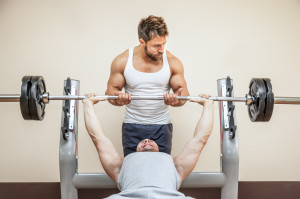We are not all the same. Many of us already know that, but still become enticed by the idea that if there is a Mr. Mega Body or Mr. Mega Strength out there and we should train exactly the way they do. I don’t think that this is always a bad idea. If I were just starting out with training, I would rather train like someone who is getting results than someone who isn’t. But what if you or I train like an elite lifter but fail to obtain the outstanding results that they are obtaining? We have three choices as to how to respond. One choice would be to get discouraged, give up and quit. A second choice would be to keep training the same way. A third choice is to try a different way of training. I like the third choice the best. If I am doing something that is not working, I have nothing to lose if I try something else that doesn’t work. At the same time, I have something to gain if I find out that it does work. If do try a new way of training, what approach should I use to figure out the best way to train?
There are four basic ways to approach training when trying to determine how to train. The four approaches consist of:
- Imitation
- Exploration
- Modification
- Education
Imitation refers to imitating the training that someone else is doing. Exploration refers to random exploration of trying new training strategies. Modification refers to modifying a version of training that someone else is doing or suggesting, and it can also refer to modifying a training method that you have already tried. Education refers to learning about physiology or scientific studies and applying it towards strength training. All approaches have their pros and cons, but at this point I am going to focus on the fourth approach, which is to experiment within the context of sound physiological principles. My favorite way of doing this is to experiment according to what I refer to as an SRRR profile. Everyone has their own SRRR profile. An SRRR profile consists four factors which include:
Stimulation (S)
Recovery (R)
Retention (R)
Readiness (R)
Stimulation refers to the type of workout that does the best job of stimulating strength or muscle growth in a given individual. Recovery refers to the amount of time a person needs in order to fully recover from a workout as well as how well they can recover from workouts of varying amounts of intensity. Retention refers to the amount of time that a person can retain strength or muscle mass after they have recovered from a workout. The last R refers to Readiness which is an evaluation as to whether or not a lifter’s muscles and body are ready to handle a given workout. It also refers to the question of whether or not their body is ready for a positive adaptation. A positive adaptation means becoming bigger or stronger because anabolic stimulation and anabolic recovery are occurring as opposed to steady state stimulation and steady state recovery when the body only has the ability to regain its previous level of strength, but cannot exceed it.
Learning how to train and recover in such a way that maximizes all four of an individual’s SRRR factors can take more than a lifetime if there is no basis for experimenting in order to find an optimum straining strategy. While I believe that precision point training provides a starting place for discovering a personal SRRR profile that will translate into a training strategy, I believe that there are some lifters who possess an SRRR profile that allows them to succeed apart from using precision point training. These are the types of lifters that I would like to discuss as this article comes to a close.
It is possible for a lifter to have superior ability in any of the SRRR factors. If a lifter has superior ability in regard to the Stimulation of strength or muscle mass, then designing a precise workout for strength is not as necessary. A larger variation of workouts can be done with positive results than within the normal lifting population. This is the type of lifter who can succeed with a minimum of training, or a lifter who can do a workout that is designed more for endurance training, yet it still results in a gain of strength or muscle mass. A lifter who is superior in the area of Recovery will be able to withstand more training and/or will be able to recover quicker than normal. A lifter who is superior in the area of retention will be able to rest between workouts for a longer time than normal without losing strength or muscle mass. And a person who is high in the area of readiness will possess a body that is consistently ready to adapt to workout stress in a progressive manner.
Training progress will come easier for a lifter who is well endowed in any one of the SRRR factors. Those who are well endowed in any one of the SRRR factors may see their training progress take off when they train in a way that favorably corresponds to their SRRR profile. Most people who engage in weight training are not so fortunate to be high in any of the SRRR factors. In my next article, I will explore the first SRRR factor, which is stimulation and the variables that can be considered for stimulating strength. In the mean-time, best of training to you.

